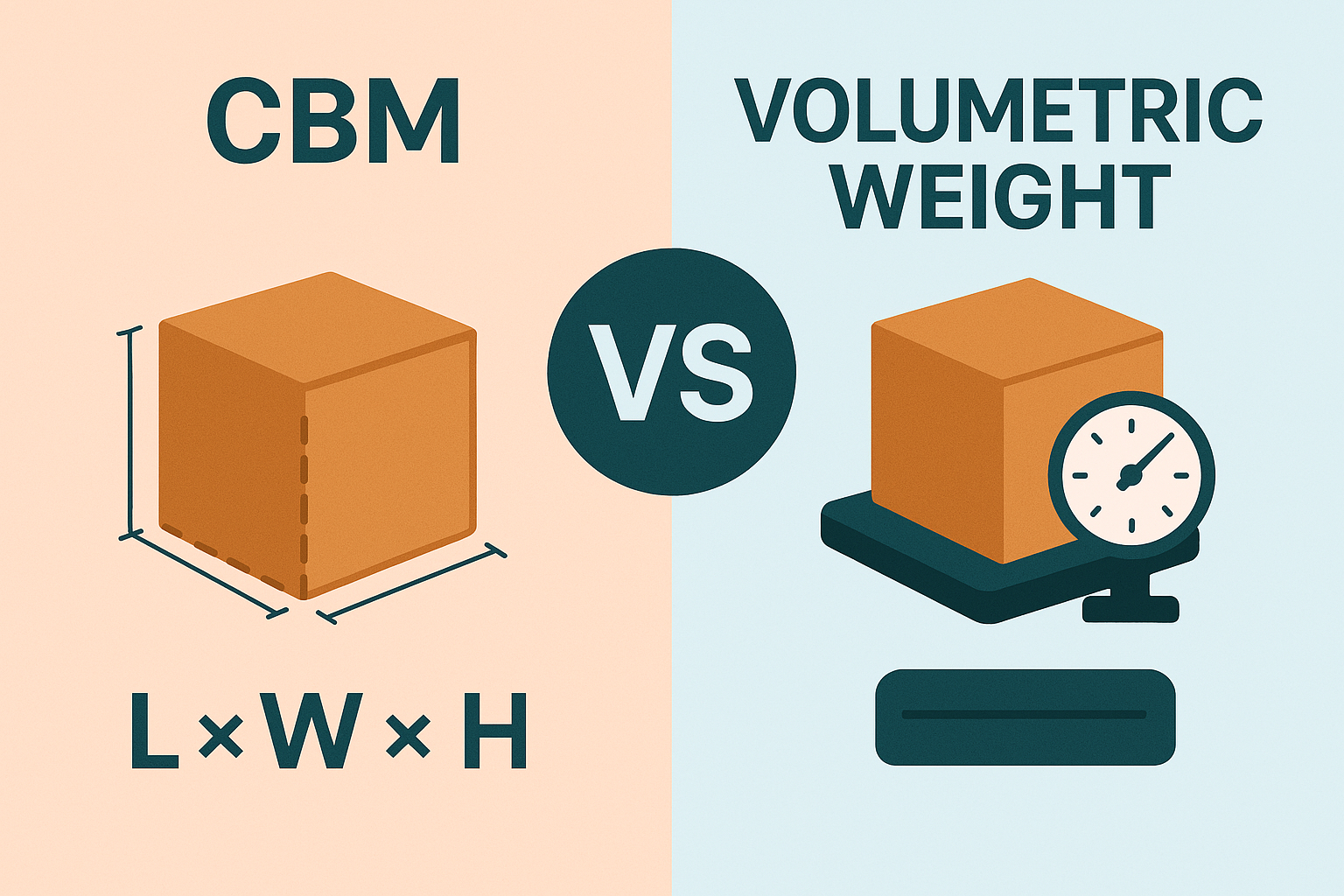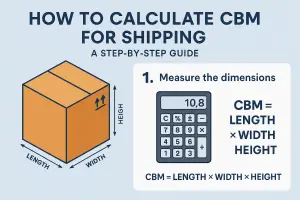Understanding the difference between CBM (Cubic Meter) and Volumetric Weight is crucial for accurate shipping cost calculations. Whether you’re shipping by sea, air, or courier services, using the wrong measurement can lead to unexpected charges.
In this guide, we’ll break down:
- ✅ What CBM and Volumetric Weight mean
- ✅ How to calculate both (with examples)
- ✅ When each is used (air vs. sea freight)
- ✅ Tips to reduce costs based on these measurements
1. What is CBM (Cubic Meter)?
CBM = Length (m) × Width (m) × Height (m)
CBM measures the physical space your cargo occupies in a shipping container. It’s the standard for:
- Sea freight (LCL & FCL shipments)
- Road transport
- Warehouse storage pricing
Example:
A pallet measuring 1.2m × 1m × 0.8m has:
CBM = 1.2 × 1 × 0.8 = 0.96 CBM
2. What is Volumetric Weight?
Volumetric Weight = (Length × Width × Height in cm) / 5000
Also called “Dimensional Weight,” it’s a pricing technique used by:
- ✈️ Air freight carriers (IATA standard)
- 🚚 Courier services (DHL, FedEx, UPS)
Why it exists: Airlines charge based on space (not just weight) because lightweight, bulky packages waste cargo space.
Example:
A box measures 60cm × 50cm × 40cm (Actual Weight = 10kg).
– Volumetric Weight = (60 × 50 × 40) / 5000 = 24kg
– Carrier charges based on 24kg (not 10kg)!
3. Key Differences: CBM vs. Volumetric Weight
| Factor | CBM | Volumetric Weight |
|---|---|---|
| Used For | Sea freight, road transport | Air freight, couriers |
| Formula | L × W × H (in meters) | (L × W × H in cm) / 5000 |
| Charging Basis | Pay for space used | Pay for higher of actual or volumetric weight |
| Example | 1 CBM = ~1,000kg in sea freight | 1 CBM = 167kg in air freight (167kg = 1m³ × 167kg/m³ IATA ratio) |
4. Which One Applies to Your Shipment?
When to Use CBM:
- Shipping via sea (LCL/FCL)
- Calculating container space
- Warehouse storage costs
When to Use Volumetric Weight:
- Shipping via air freight
- Using express couriers (DHL, FedEx)
- Sending light but bulky items (e.g., pillows, foam)
5. How to Reduce Costs with Smart Packing
For CBM (Sea/Road):
- Stack efficiently – Use uniform box sizes.
- Avoid wasted space – Disassemble furniture if possible.
- Use pallets wisely – Standard pallets optimize container space.
For Volumetric Weight (Air/Courier):
- Reduce package dimensions – Use compact packaging.
- Choose flexible materials – Vacuum-seal clothes/foam.
- Compare carriers – Some use /4000 instead of /5000, increasing costs!
Pro Tip:
For air shipments, always calculate both actual weight and volumetric weight – the carrier will charge based on whichever is higher!
6. Frequently Asked Questions (FAQs)
Q: Do I need to calculate both CBM and volumetric weight?
A: Only if shipping via both sea and air. Most carriers specify which to use.
Q: Why do couriers use /5000 or /4000?
A: It’s an industry-divider – Lower divisors (e.g., /4000) increase volumetric weight, raising costs. Always check!
Q: Can I argue against volumetric weight charges?
A: Rarely. It’s standard practice, but negotiate rates for frequent shipments.
Final Thoughts
- CBM = For sea/road (pay for space).
- Volumetric Weight = For air/couriers (pay for space or weight—whichever is higher).
- Smart packing saves money in both cases!

